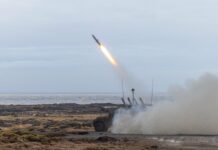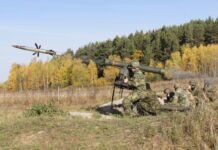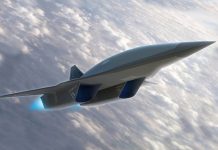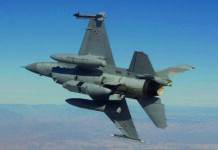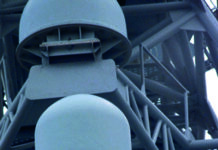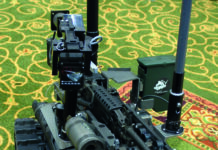In April 2022, a US Marine Corps (USMC) unit and an air-surveillance radar were moved at short notice from Norway to Lithuania in order to support NATO’s air policing mission in the Baltic area. The redeployment from the Arctic to the Baltic was an impressive demonstration of the ability of NATO to provide additional radar capability at short notice to one of the alliance’s smaller members, but it is also interesting because the equipment involved was a Northrop Grumman AN/TPS-80 Ground/Air Task Oriented Radar (G/ATOR), a system that incorporates many of the advanced features now being fielded in modern surveillance radars.
A short to medium range multi-role radar intended to detect:
- fixed and rotary-wing aircraft
- Unmanned Air Vehicles (UAVs)
- cruise missiles
- rockets
- incoming artillery and mortar rounds
The AN/TPS-80 has a basic configuration consisting of a trailer-mounted radar towed by the Medium Tactical Vehicle Replacement (MTVR), the Communications Equipment Group (CEG) mounted on a High Mobility Multipurpose Wheeled Vehicle (HMMWV), and Power Equipment Group (PEG) mounted on another MTVR. The complete system is air-portable in a C-130 HERCULES and can be airlifted to its operating location by three CH-53E SUPER STALLION heavy-lift helicopters or MV-22B OSPREY tilt-rotor aircraft.
AESA Systems
Like many modern radars, G/ATOR uses an Active Electronically Scanned Array (AESA) antenna. This is based on air-cooled modules but was designed at a time when technology was moving from Gallium Arsenide (GaAs) hardware to the newer Gallium Nitride (GaN).
Using two of the Low-Rate Initial Production (LRIP) examples, the USMC achieved Initial Operational Capability (IOC) of the air surveillance mission in February 2018, while the remaining four were used to establish IOC for the counter-battery mission. All six used GaAs technology, but from the seventh example onwards, the radar used GaN components. Deliveries of this definitive version started in the summer of 2018.
G/ATOR will be fielded in several blocks. Block 1 is focussed on the short range air-defence and air-surveillance roles. Block 2 will used software that provides a counterfire capability, with the radar detecting and tracking incoming artillery and rocket projectiles. Block 3 was intended to provide improved performance against more advanced threats, but this variant has been deferred. Block 4 will provide air-traffic control capabilities.
Radar’s Role
In the past, a radar’s role was largely defined by its hardware, but many of today’s radars obtain their functionality from software. G/ATOR will perform four principal missions using the same hardware and will rely on software to optimise the system for each mission. Every radar delivered will have the inherent capabilities required for all missions. When all the planned modes are fully implemented, operators will be able to switch between air-surveillance, air-defence, ground-weapon locating, and air-traffic control functions by using the appropriate software. Northrop Grumman has created a digital model of the G/ATOR that will allow new software or engineering changes to be developed, demonstrated, and deployed in a virtual environment prior to being fielded.
In FY 2014, the US launched the Three-Dimensional Expeditionary Long-Range Radar (3DELRR) programme intended to replace the United States Air Force (USAF) AN/TPS-75 radar and the USMC`s AN/TPS-59 radar. The new radar would provide long-range surveillance, detection and tracking of air-breathing targets including threats with high manoeuvrability, and those with a low radar cross section (RCS). The threat spectrum also included theatre ballistic missiles (TBMs), so the 3DELRR was also intended to have the capability of determining a missile’s launch point and predicted impact location.
GaN Technology
A month after being selected as the winning team, Lockheed Martin completed production of its first 3DELRR radar, which will be designated AN/TPY-4. This is a software-defined radar operating in L-Band (1,215 to 1,400 Mhz). Its GaN-based AESA antenna can provide coverage of a 90° sector when stationary, or can be rotated at rates such as 6 rpm in order to scan a full 360°.
A US$281m contract to develop the GaN-based SENTINEL A4 air and missile defence radar system was awarded to Lockheed Martin in September 2019. Intended to replace the US Army’s current Raytheon AN/MPQ-64A3 air and missile defence radar, it will offer significantly increased performance against fixed and rotary wing threats, cruise missiles, plus the ability to detect and track rocket, artillery, and mortar projectiles, pinpointing the launch site and likely impact locations. The first prototype for a planned 18 radars became operational in September 2020, five months ahead of planned schedule. An accelerated contract award in October 2021 covered the production of five additional radar systems due to be delivered by the end of 2022 to help the US Army to evaluate its new sensor.
GaN technology is also used in Raytheon Missiles & Defense’s Lower Tier Air And Missiles Defense Sensor (LTAMDS) radar being developed to replace the AN/SPY-65A radar used by the PATRIOT SAM system. It uses three AESA arrays to provide all-round coverage, an improvement over the sector coverage of the earlier radar, and has an improved range and an ability to track smaller, faster-moving targets. LTAMDS will operate as a sensor for the US Army’s Integrated Air And Missile Defense Battle Command System (IBCS). The first of a batch of six radars due to be delivered to the Army in 2022 arrived at the White Sands Missile Range in April.
Raytheon is promoting LTAMDS as part of a series of radars designated GhostEye, and is offering a GhostEye MR version for integration with The National Advanced Surface-To-Air Missile System (NASAMS). In addition to providing all-round coverage, GhostEye MR will have the range needed to fully-exploit newer missiles such as the Advanced Medium Range Air-To-Air Missile Extended Range (AMRAAM-ER).
Under a programme designated AETHER SPY, Northrop Grumman plans to develop the next generation of integrated circuits. Intended for use in advanced AESA antennas, these will make it possible to create a future multifunction radar able to simultaneously perform multiple sensing, communication and electronic warfare functions.
Software-Defined Operation
Features such as GaN technology and software-defined operation are also being exploited by other radar manufacturers. Elta began development of the ELM-2084 Multi-Mission Radar (MMR) in 2002 with the goal of creating a sensor able to detect and track aircraft and ballistic-missile targets. Suitable for installation on a range of platforms, it consists of an S-band radar system, a control module, a cooling unit, and a power generator. The AESA antenna uses GaN technology and can cover a sector of up to 120° by means of electronic scanning but can also be rotated at up to 30 rpm to provide all-round coverage.
When used in the air defence mode, the ELM-2084 is intended to detect and classify all types of air targets, and generate a real-time air situation picture, while a Fire Control Radar (FCR) mode allows it to be used to control surface-to-air and anti-missile systems. An Artillery mode allows the detection of incoming mortar and artillery shells, as well as rockets and missiles, and the radar can identify the location from which these were fired, and their likely impact point.
A prototype was used as an early-warning radar during IDF operation “Cast Lead” in 2008, when it successfully detected enemy artillery fire. Three years later an MMR radar was used as the control element of the IRON DOME anti-rocket system. The basic design has been scaled down to create the ELM-2084 MINI variant designed to deal with shorter range threats. Four MMR modules form the basis of the company’s MF-STAR naval radar, which in turn led to the land-based MF-STAR LB based on a single rotating module.
According to Thales, the GM400 ALPHA – the latest member of its GaN-based GROUND MASTER series of air-surveillance radars – has five times the processing power of the previous configuration and uses advanced artificial intelligence algorithms. These features allow the radar to process large amounts of complex data. Detection range is increased, and the radar can detect targets ranging from fast jets and missiles to slow-flying targets such as helicopters and UAVs.
Russia
Russia has developed and fielded low-band radars which it claims can track stealth aircraft, and some Western sources have also claimed that radars operating at such low frequencies can at least partially circumvent current low-observable technologies.
Russia has developed several radar systems that combine subsystems operating at two or more frequencies. In 2013 NNIIRT displayed its 55Zh6UME (also known as the NEBO-UME), a radar that combines two antenna units mounted back-to-back in a single rotating assembly. One operates in the VHF band, the other in L-band.
NNIIRT’s 55Zh6M NEBO-M (also available in an export variant designated 55Zh6ME NEBO-ME), uses three antenna units, each operating in a different band – the RLM-M (Radiolokatsionniy modul – metroviy diapazon) VHF (metric) subsystem, the L-band RLM-D (Radioloaktsionniy modul – decimetroviy diapazon), and the RLM-S (Radiolokatsionniy modul – santimetroviy diapazon) based on an X-band AESA antenna. All three are linked to the KU-RLK (Kabina upravleniya radiolokatsionnovo kompleksa) command post, which fuses the incoming data to create a single radar picture. Deployment of the NEBO-M began in 2017, with the first two operational regiments being based at Saint Petersburg and Kareliya.
China
China is also promoting low-band radar as a viable anti-stealth technique. Engineers at the China Electronics Technology Group Corporation (CETC) are confident that they have developed early-warning radars able to detect and track stealth aircraft. At least five radars are claimed to have anti-stealth capability – the JY-26, JY-27, JY-27A, LX-11, and JY-50, along with the Nanjing Research Institute of Electronic Technology (NRIET) YLC-8B. All operate at VHF or UHF frequencies.
The YLC-8B is a medium/high-altitude long-range 3D surveillance radar operating in the UHF band. Its antenna combines 2D electronic scanning and 1D mechanical scanning. Resolution is 150 m in range, and 6° in azimuth at the radar’s centre frequency.
The JY-26 SKYWATCH-U 3D long-range air-surveillance radar operates in the UHF band and can cover a 90° azimuth sector when active electronic scanning is used. Mechanical antenna scanning allows it to cover a full 360° in azimuth coverage. According the CETC, its anti-stealth performance results from a combination of a UHF operating frequency and a large power aperture.
While the antenna of the LX-11 long-range medium-to-high altitude early-warning radar may look at first sight like a design from the 1950s, it is teamed with a solid-state transmitter offering fully-coherent frequency agility. The LX-11 operates on two frequencies (designated A and B) in the VHF band. Range resolution is 900 m, while the azimuth resolution is up to 7.2° with the A-band, and up to 9.2° in B-band.
Anti-Stealth Capability
These claims of anti-stealth capability cannot be accepted at face value, given that until recently neither Russia nor China will have had the opportunity to use radars of this type against US low-RCS aircraft. Although opportunities to track the F-117, F-22, F-35, and B-2 have occurred, most did not involve aircraft that were flying combat missions. When flying non-combat missions, US stealth aircraft routinely carry omnidirectional radar reflectors that enhance their radar cross-section (RCS). This ensures that the aircraft can be tracked by friendly radars such as air-traffic control radars, but also serves to conceal the aircraft’s RCS.
Until recently, the only non-US radar operators with direct experience of trying to track stealth aircraft on operational missions are those from the countries that have been attacked by the F-117, F-22, or B-2.
The only unclassified account seems to have been that of the Serbian unit that shot down an F-117 on 27 March 1999. Commanded by Zoltan Dani, this relied on the Soviet-era P-18 radar as an acquisition aid. The P-18 operates at frequencies ranging from around 150 to 175 MHz, and the Serbian unit operated its radar at the lowest end of this band. (Claims that the unit had modified the set to lower its operating frequency still further are now reported to have been disinformation.)
Under normal circumstances the P-18 can detect a fighter-sized aircraft at a range of 125 to 200 km, but the Serbian unit did not achieve lock-on against the F-117 until the NIGHTHAWK was only 25 km away. This would suggest that the stealth technology of the US fighter was at least partially effective at 150 MHz.
Russia’s military intervention in the Syrian conflict finally give it the possibility of testing its modern radars against the latest generation of US stealth aircraft. The US had begun to use the F-22 against targets in Syria during September 2014, but it was not until late in 2015 that Russian deployed its own latest-generation air-defence assets to that country, including S-400 battery equipped with the 91N6 ‘BIG BIRD’ surveillance radar and 92N6 GRAVE STONE 8-12.5 GHz fire-control radars. F-22 combat operations over Syria in 2016 may have pitted US fighter against these air-defence assets.
In December 2017, Israel declared Operational Capability (IOC) of its first Lockheed Martin F-35 LIGHTNING II, and by May of the following year had conducted combat operations with its new fighter on what it described as “different fronts”. It released a photograph showing what appears to be an F-35 flying over Beirut, and one unofficial report claims that several Israeli F-35s have flown deep into Iranian airspace.
But while these operations may have exposed the F-22 and F-35 to unfriendly radars, the operators of these air defences will have no way of knowing if the US fighters were operating at minimal RCS or were using radar reflectors in order to conceal their full stealth capability.



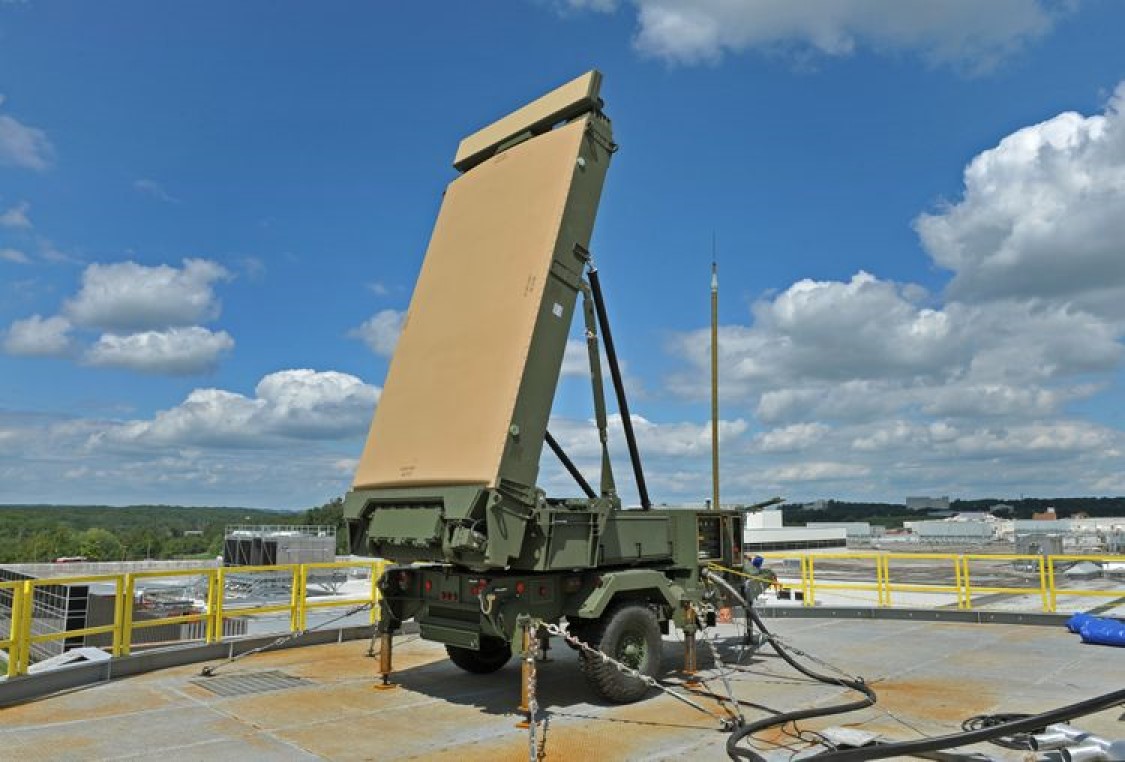

![Countering small drones: A big challenge Developed by the Australian company Droneshield. the Dronegun Tactical uses·directional antennas to deliver RF energy intended to disrupt control, video, and navigation signals across multiple frequency bands, and to prevent the target from using satellite navigation. [Droneshield]](https://euro-sd.com/wp-content/uploads/2025/09/Dronegun-Tactical-Droneshield-Kopie-218x150.jpg)
![BVRAAMs: Closing the horizon This photo showing a piece of the wreckage of an Indian Rafale, serial number ‘BS 001’, showed up on social media shortly after the IAF’s night operations of 6/7 May 2025. [Vigorous Falcon X Account]](https://euro-sd.com/wp-content/uploads/2025/06/Rafale-Wreckage-Piece_Vigorous-Falcon-X-Account-Kopie-218x150.jpg)
